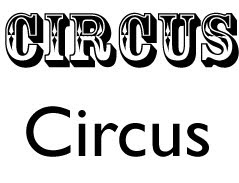The layout of the text is very important you may have the opportunity to place text anywhere you wish but while in doing so there are multiple obstructions that can get in the way of your text being legible are not. General Layout, having using paragraphs and not just full lines of words where the eyes become tired or the text doesn't flow as easily.
Colour is one, for example: having a yellow coloured font over a white background. The text almost blends in with the background and makes the text illegible, so the colour of the font and the colour of the area where the font will be placed is very important.
Font size is also important to keep in mind, more of an obvious note, if the font is too small then it becomes illegible, too big and it could potentially ruin the design. It does come down to what you are designing and what tone of voice your trying to emit. There are certain font size regulations to follow in some areas of the design industry,
examples: Newspapers, magazines.
Typeface can also effect legibility, there are many different types of typefaces out there and some are god awful, as designers we need to know when using a sans serif and a serif typeface would be a wise choice.
Type over images, having type overlapping images is not a wise choice, especially if the colour of the image itself is that of similar colour to that of the type that is over lapping it, they blend into each other and rendering them both useless.
Above is an example of how text could become hard toread if the layout of the words are not thought of properly.
I also learnt that within almost every design there should be a tone of voice, could either be the text or images or general colours of the design.
Text can easily express a tone of voice, trying to get a loud message across one would go about using Bold Capitals to express shouting, all typefaces have their own tone of voice and as designers we can manipulate the text to express a tone of voice. Colours can express tone of voice, example: sky blue has a very calm and soothing look and pink though not as feminine as it used to be still sends out a feminine feel and would be used for the boxes of girls dolls.
Imagery will always have different tones of voices, doesn't only come down to what the image is, it can also be how the image was portrayed, black and white for a more serious artistic look or at a awkward angle to express panic there are multiple of ways to express a tone of voice using imagery.

Above is a simple example of tone of voice in type.






